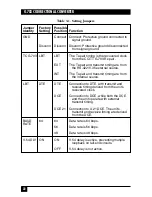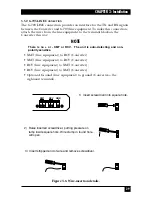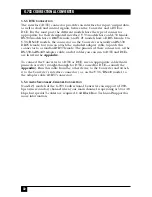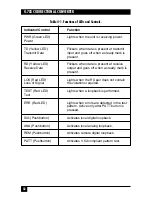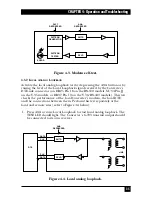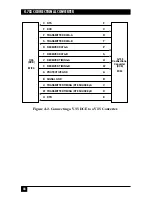
33
CHAPTER 4: Operation and Troubleshooting
4.2 Operating Instructions
The G.703 Codirectional Converter operates unattended once it has been
installed and powered up. Intervention is only required when the Converter is
set up for the first time, when it must be adapted to new operational
requirements, or when diagnostic loops are necessary.
4.2.1 T
URN
-O
N
P
ROCEDURE
The Converter is turned on as soon as power is connected. When power is
connected, the PWR LED comes on and remains lit as long as the unit
receives power.
If the LOS LED is ON, check the line and make sure it is connected properly.
The TEST LED is ON while any front-panel pushbutton is depressed, or when
one of the loopback pins of the interface (DTE) connector is active.
4.2.2 A
CTIVATING
L
OOPS
When performing tests, remember:
• Activation of a test loop interrupts normal traffic flow.
• Only one test may be activated at a time.
4.2.3 T
URN
-O
FF
P
ROCEDURE
The Converter can be turned off only by disconnecting its power.
NOTE
Always disconnect the power cord from the AC outlet before you
disconnect it from the Converter.
4.3 Diagnostics
The G.703 Codirectional Converter provides local loopback and remote
digital loopback in compliance with the V.54 standard. These loopbacks can
be activated manually from the unit’s front panel. On any of the data-
communications (DTE) interfaces that the Converter supports except X.21,
these loopbacks can also be activated electronically through the DTE
connection. (X.21 was developed before V.54 and does not include provisions
for electronic loopback control.)
The loop test buttons (DIG, ANA, and REM) and LEDs built into the
Converter allow you to rapidly check the unit, the attached cables, and the
attached DTEs. Use the test procedures described in this section to verify
normal system operation and to isolate faulty equipment if a failure occurs.
(Before testing the operation of the system equipment and line circuits, make
sure that all devices are turned on and are properly configured.)




